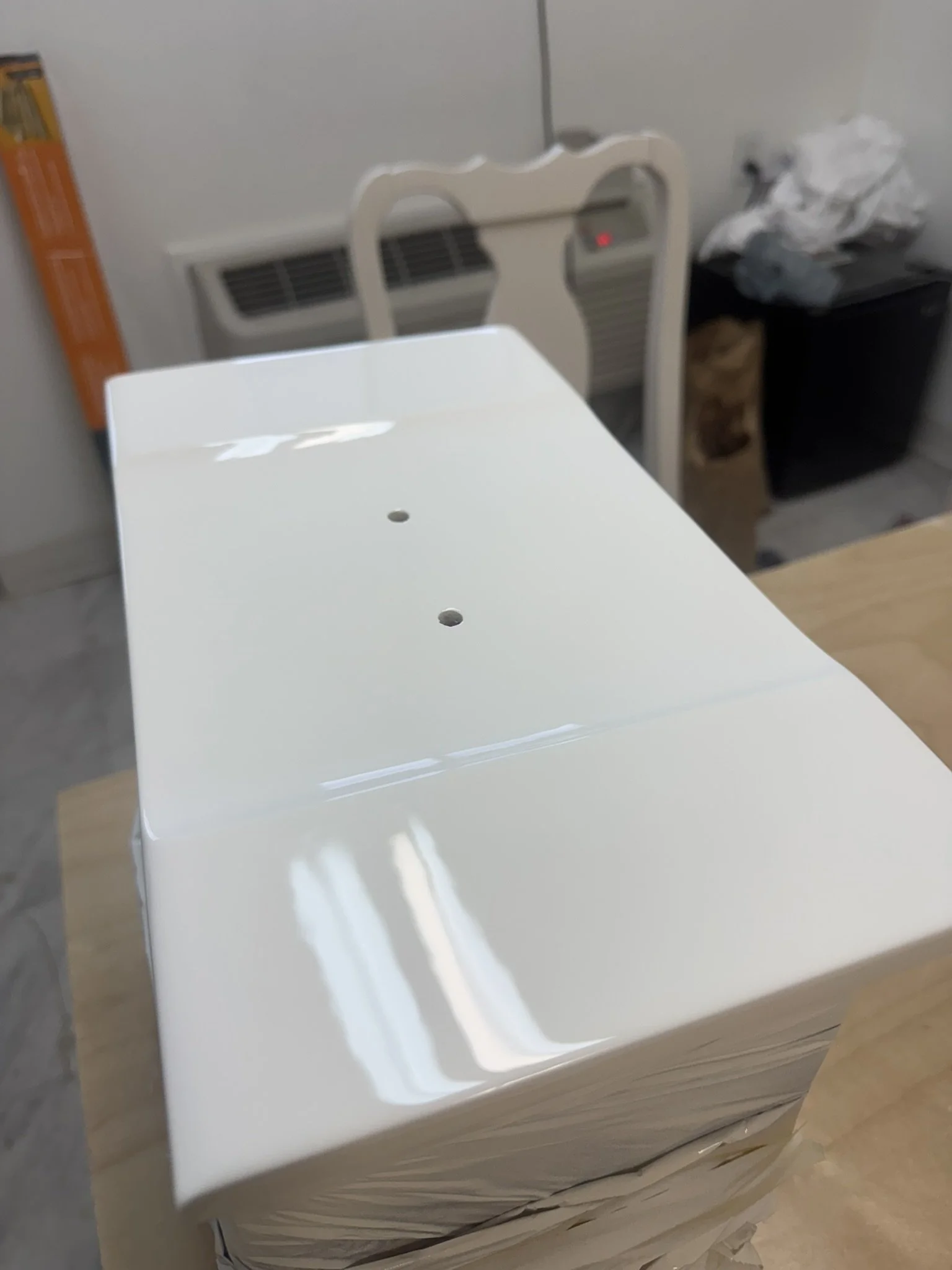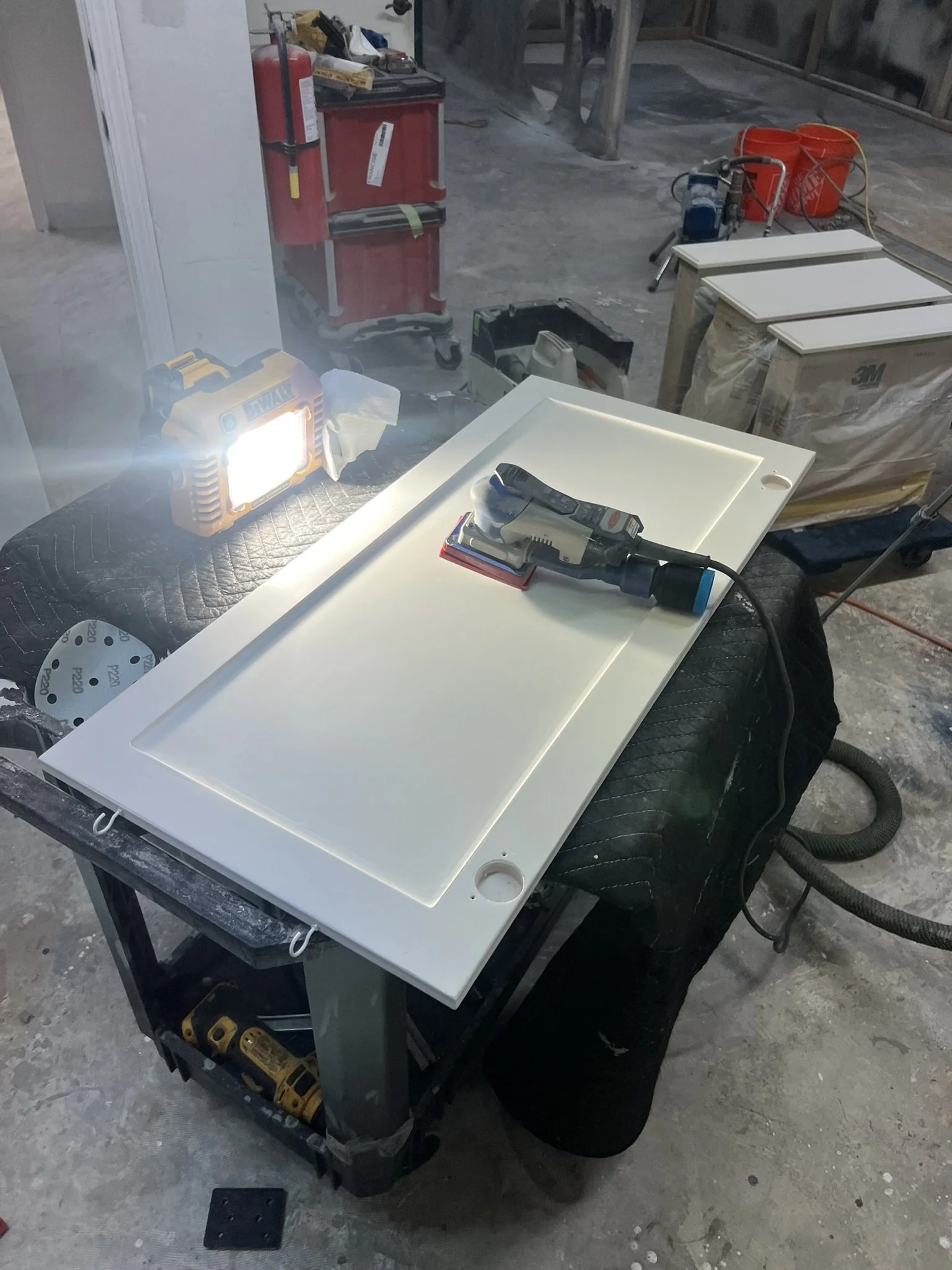Sanding! Lots and Lots of Sanding
Sanding is essential for painting. Or is it?
Sanding is a very crucial part of high end finishing work. It might not be the most desirable part, but it is very important. But most people, from my experience working in cabinetry and furniture shops do not sand correctly. There are many people who will always want a shortcut and feel that sanding is tedious work and just skimp on it because they do not want to put in the effort. Yet, in my experience, most people who do not accomplish the paint job they desire its not for lack of effort. It’s a lack of knowledge about what they are trying to accomplish.
Why are you sanding?
We are going to be going through the prep process of a piece of furniture which is being refinished, particularly with lacquer. The drawer below, has a beautiful smooth coat of primer that has just been applied. If your primer looks great, you are set up for success with a high gloss topcoat.
You should in most cases with furniture that has a factory finish, be sanding the factory finish off. There’s many reasons why. You are welcome to if you want to, but if the finish is not failing or in bad shape you are passing up a free coat of sanding sealer in many cases. Most if not all modern primers will stick to clear coats that were applied correctly. So in the case of the drawer it was scuff sanded with a very light 220-320 grit sanding sponge and then a coat of primer was applied. This first and second coat of primer is where the heavy sanding is done.
Sanding for flatness and smoothness on the primer
Most people sand the existing finish back very aggressively, but on the second and third coat of primer, they barely sand. As a consequence you get left with an orange peel mess or brush strokes.
Here is a picture of me sanding a door back for reference. You can see, I have a light set up at an angle, and I am checking for any imperfections. Since I am not sanding through a clear coat which has a stain or tannins in it, I am not worried about sanding through and getting bleed through. The last coat should be sanded with no lower than 400-600 grit to avoid visible scratches.
Sanding between topcoats
Sanding between topcoats is dependent on your application of primer and how well it was sanded. Sometimes, in between coats of lacquer, we do not sand at all and all coats are applied “wet on wet” which means that each subsequent coat is applied while the first one is dry, but not cured. Sanding for adhesion is not necessary here but recommended. In addition, some debris inevitability makes it way into the finish and will need to be sanded out. Water based finishes may be done the same way, but in many cases sanding between coats will be necessary and you risk trapping moisture if not waiting for the finish to fully dry.


